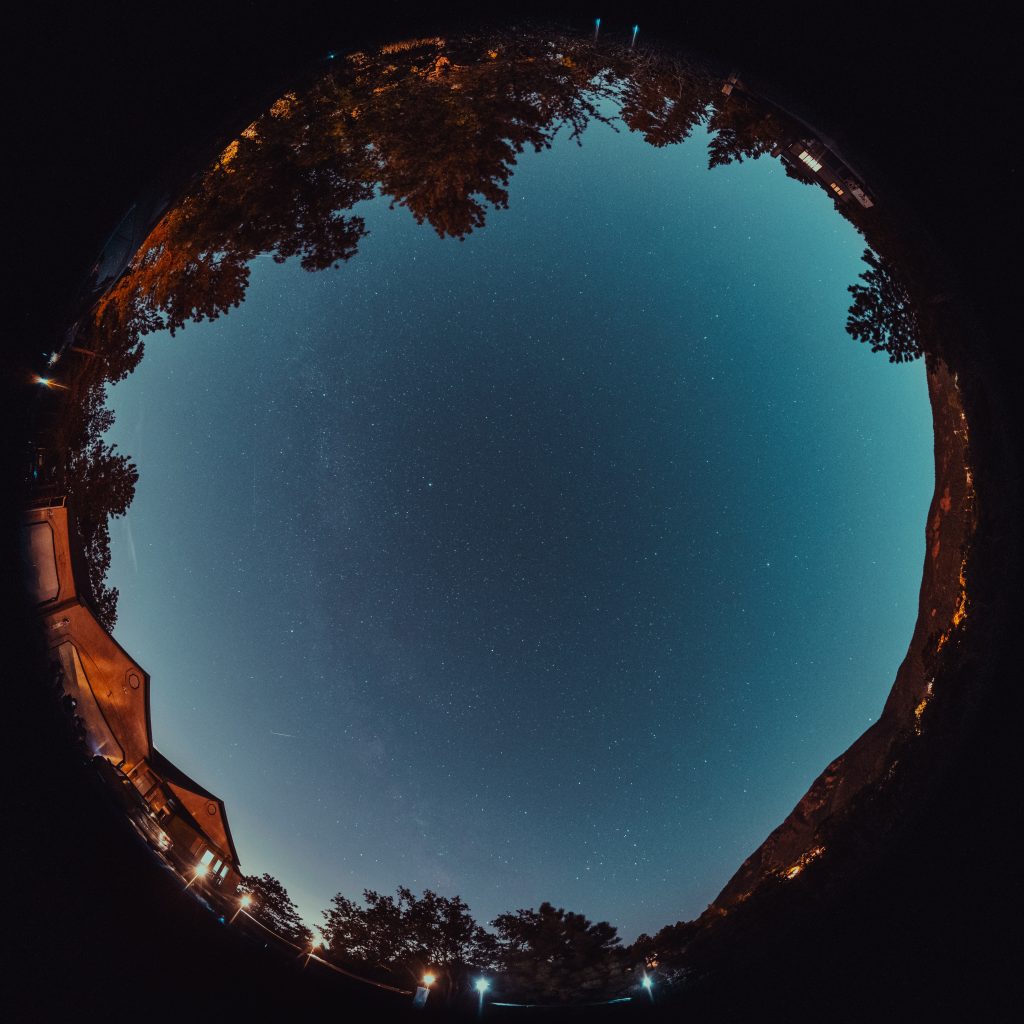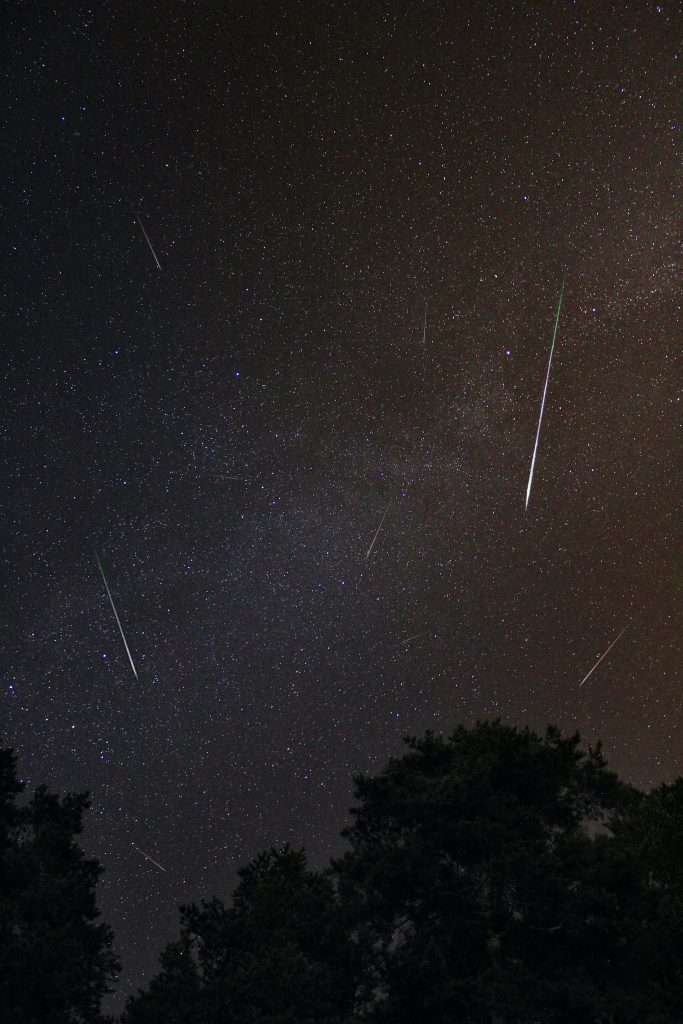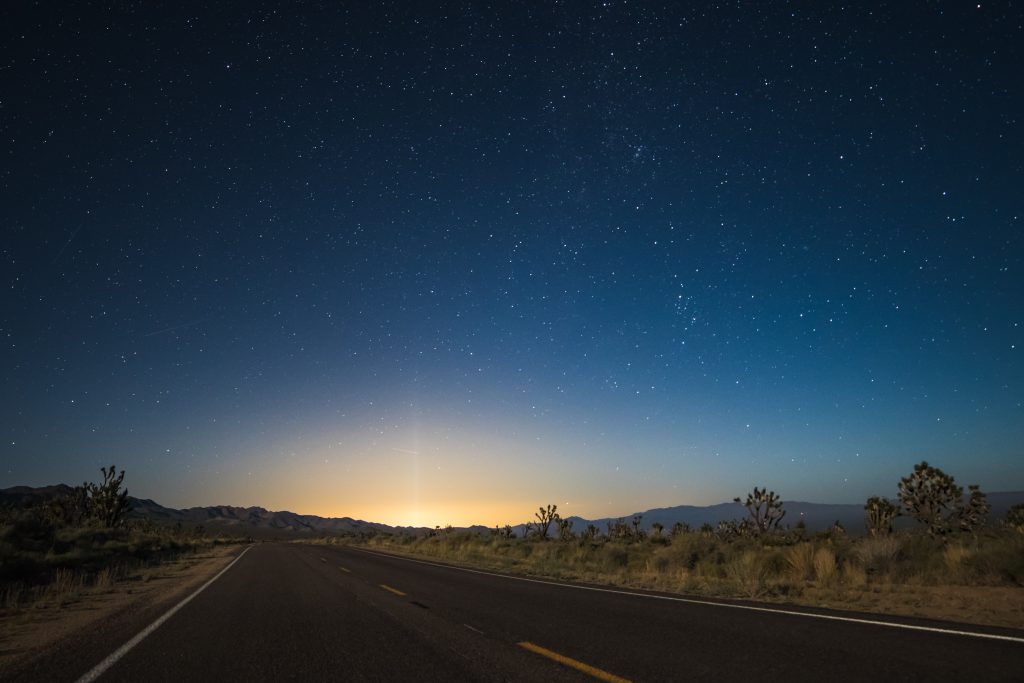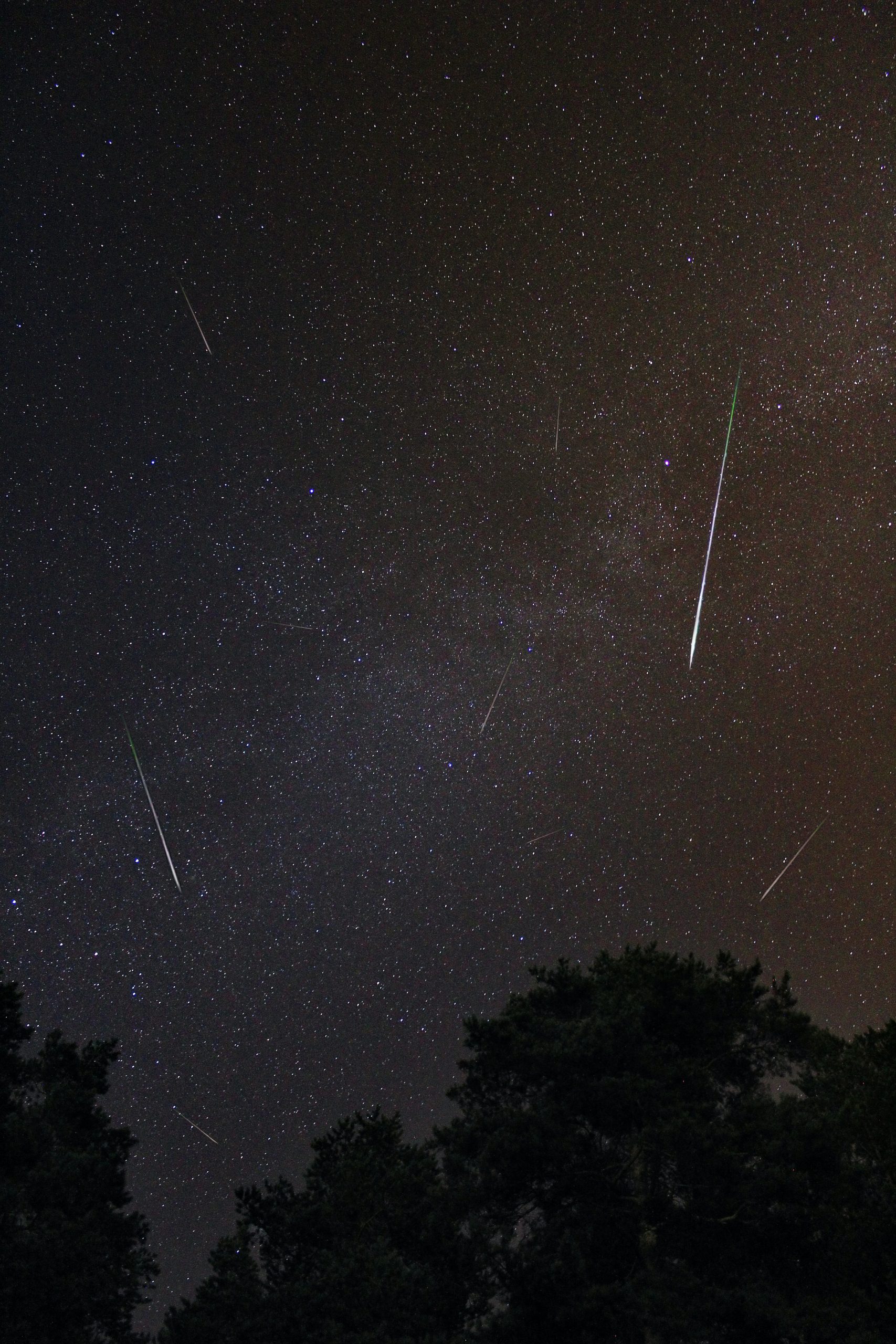Sure! You’re probably wondering if you can use a telescope to observe the Perseid meteor shower. Well, the good news is that you don’t actually need a telescope to enjoy this spectacular event. The Perseid meteor shower is one of the best and brightest meteor showers of the year, and it can be easily seen with the naked eye.
The meteors from the Perseid shower are generally bright and fast-moving, making them very visible in the night sky. So, all you need to do is find a dark location away from city lights, lie back, and simply look up at the sky. Grab a blanket or a cozy chair, make yourself comfortable, and get ready to witness this breathtaking celestial show. Enjoy the Perseid meteor shower! Yes, you can definitely observe the Perseid meteor shower with a telescope! In fact, using a telescope can enhance your viewing experience and allow you to see even more detail in the meteors. In this article, we will explore everything you need to know about observing the Perseid meteor shower with a telescope, including the best time to observe, ideal locations, considerations, advantages and disadvantages, telescope specifications, preparing your telescope, setting it up, techniques for observation, tips for maximizing your chances, common challenges and solutions, and alternative methods of observation.
What is the Perseid Meteor Shower?
The Perseid meteor shower is one of the most highly anticipated astronomical events of the year. It occurs annually from late July to mid-August, with its peak typically falling around the 11th to 13th of August. During this time, the Earth passes through the debris left behind by the comet Swift-Tuttle, resulting in a spectacular display of shooting stars.
Definition of the Perseid Meteor Shower
The Perseid meteor shower is named after the constellation Perseus, as the meteors appear to radiate from this area of the sky. It is caused by small particles of dust and debris that burn up in the Earth’s atmosphere, creating bright streaks known as meteors. These meteors are often fast-moving and leave a glowing trail behind them, making them a fascinating sight to behold.
Origin and name of the Perseid Meteor Shower
The Perseid meteor shower originates from the debris shed by the comet Swift-Tuttle. Discovered in 1862, this comet takes approximately 133 years to complete its orbit around the Sun. As it approaches the Sun, the heat causes the comet to release gas and dust, which form the meteoroids that create the meteor shower when they intersect with the Earth’s orbit.
The name “Perseid” comes from the fact that the meteors seem to radiate from the direction of the constellation Perseus. Perseus is a prominent constellation in the northern sky, named after the hero from Greek mythology who famously slayed the Medusa.
Characteristics of the Perseid Meteor Shower
The Perseid meteor shower is known for its high number of meteors and its bright and fast-moving streaks across the sky. On average, observers can expect to see around 60-100 meteors per hour during the peak of the shower. These meteors often leave long-lasting trails and occasionally produce fireballs, which are exceptionally bright meteors that light up the night sky.
Observing the Perseid Meteor Shower
Best time to observe the Perseid Meteor Shower
The Perseid meteor shower is best observed during its peak, which typically occurs around the 11th to 13th of August. During this time, the number of visible meteors is at its highest, giving you the best chance of witnessing this breathtaking celestial event.
To maximize your chances of seeing meteors, it’s recommended to observe during the pre-dawn hours when the sky is darkest and the radiant (the point in the sky where the meteors appear to originate) is at its highest in the sky. This allows you to have an unobstructed view and increases the likelihood of spotting meteors.
Ideal locations to view the Perseid Meteor Shower
Finding an ideal location to observe the Perseid meteor shower is essential for a successful viewing experience. Ideally, you want to be away from city lights and light pollution, as these can greatly diminish the visibility of meteors.
Aim to find a location with a clear view of the sky, away from trees and buildings that may obstruct your view. If possible, try to find a spot with an elevated vantage point, such as a hill or a rooftop, as this will give you a broader view of the sky and potentially increase the number of meteors you can see.
Considerations for observing the Perseid Meteor Shower
While observing the Perseid meteor shower with a telescope can greatly enhance your viewing experience, there are a few considerations to keep in mind. First, it’s important to note that meteors are typically fast-moving and can appear anywhere in the sky. Therefore, using a telescope with a wide field of view is often more beneficial than a high magnification telescope, as it allows you to capture more of the sky and increases your chances of spotting meteors.
Additionally, it’s essential to familiarize yourself with the operation of your telescope before attempting to observe the meteor shower. This includes knowing how to properly set up and align your telescope, as well as how to calibrate it for meteor observation.

Using a Telescope for Meteor Shower Observation
Can you use a telescope to observe the Perseid Meteor Shower?
Yes, you can certainly use a telescope to observe the Perseid meteor shower! While telescopes are commonly associated with observing distant celestial objects, they can also be used to observe meteors. Telescopes allow for a closer and more detailed look at the meteors, revealing their color, trajectory, and other characteristics that may not be visible to the naked eye.
Advantages and disadvantages of using a telescope
Using a telescope for meteor shower observation comes with both advantages and disadvantages. One of the main advantages is the ability to see more detail in the meteors. With a telescope, you can observe the shape, color, and other features of the meteors, which can add another layer of excitement to your viewing experience.
However, telescopes also have some disadvantages when it comes to observing meteor showers. Firstly, telescopes generally have a narrower field of view compared to the naked eye, which means you may miss some meteors that fall outside the telescope’s view. Additionally, meteors are often fast-moving and unpredictable, making it challenging to track them using a telescope. This can require quick adjustments to the telescope’s position, which may take away from the overall observing experience.
Recommended telescope specifications for meteor observation
When choosing a telescope for observing the Perseid meteor shower, there are a few specifications to consider. Firstly, a telescope with a larger aperture is preferred, as it allows more light to enter and creates a brighter image. A recommended aperture size for meteor observation is between 6 to 10 inches, although smaller apertures can still provide satisfactory views.
In terms of magnification, a telescope with a moderate power eyepiece is recommended, as too high of a magnification can make it difficult to track the fast-moving meteors. A magnification of around 50-100x is often suitable for meteor observation.
Finally, it’s worth considering the portability of the telescope. Since meteor showers can last for several hours, it’s essential to have a telescope that is easy to set up and transport. Opting for a lightweight and compact telescope can make the process much more convenient and enjoyable.
Preparing Your Telescope
Choosing the right telescope for meteor shower observation
Choosing the right telescope for meteor shower observation is a crucial step in ensuring a successful viewing experience. As mentioned earlier, consider factors such as aperture size, magnification, and portability when selecting a telescope.
It’s also important to choose a telescope that suits your experience level. If you are a beginner, opting for a more user-friendly telescope with automated tracking capabilities can make the observation process much easier. On the other hand, experienced observers may prefer more advanced and customizable telescopes to fine-tune their viewing experience.
Cleaning and maintaining your telescope
Before using your telescope for meteor shower observation, it’s important to ensure that it is clean and well-maintained. Dust and dirt on the optics can greatly affect the image quality, so make sure to clean the lenses or mirrors following the manufacturer’s instructions.
Regular maintenance of the telescope, such as checking and adjusting the collimation (alignment of the optical elements), can also contribute to optimal performance. Keeping your telescope in good condition will help ensure clear and crisp views of the meteors during the observation.
Accessories and equipment for meteor shower observation
There are several accessories and equipment that can enhance your meteor shower observation with a telescope. One essential accessory is an eyepiece with a wide field of view, which allows you to capture more of the sky in a single view. This is particularly useful when trying to spot meteors, as their appearance can be unpredictable.
Another helpful accessory is a red flashlight or headlamp, which allows you to see your telescope’s controls and settings without disrupting your night vision. Red light is less likely to interfere with your eyes’ adaptation to darkness, making it easier to locate and track meteors.
Additionally, consider using a camera adapter for your telescope if you wish to document the meteor shower through astrophotography. This allows you to attach a camera to your telescope and capture stunning images of the meteors as they streak across the sky.

Setting Up Your Telescope
Selecting an appropriate viewing location
Before setting up your telescope for meteor shower observation, it’s important to find an appropriate viewing location. As mentioned earlier, choose a spot away from city lights and light pollution to maximize your visibility. Take into account any potential obstructions, such as trees or buildings, that could hinder your view of the sky.
Once you find a suitable location, check for any potential safety hazards, especially if you plan to observe during the late hours or pre-dawn. Ensure that the spot is stable and secure, allowing you to set up and operate your telescope safely.
Assembling and aligning your telescope
Assembling your telescope correctly is essential for optimal performance. Follow the manufacturer’s instructions carefully and take your time to ensure that all parts are properly connected and secured. A stable tripod or mount is crucial to keep the telescope steady during observation.
Once your telescope is assembled, it’s important to align it to the night sky. Most telescopes have alignment procedures, such as pointing to a known star or celestial object, to help you align the telescope accurately. Proper alignment ensures that your telescope is pointing in the correct direction and allows for more accurate tracking of meteors.
Calibrating your telescope for meteor observation
Calibrating your telescope specifically for meteor observation is an important step to ensure the best possible views. Begin by focusing your telescope on a bright star or object and adjust the focus to achieve a clear and sharp image. This allows you to see the meteors more clearly and accurately, capturing their details.
Additionally, consider adjusting the telescope’s tracking speed or utilizing manual tracking to keep up with the fast-moving meteors. Experiment with different tracking settings to find the optimal speed that allows you to track meteors effectively without losing them in the field of view.
Techniques for Telescope-Assisted Observation
Naked-eye observation vs. telescope observation
Naked-eye observation and telescope observation offer different perspectives on the Perseid meteor shower, and both have their advantages. Naked-eye observation allows you to take in the full expanse of the sky, making it easier to spot meteors with your peripheral vision. This method is great for observing the shower as a whole and appreciating the sheer beauty and awe of the event.
On the other hand, telescope observation allows you to see more detail in the individual meteors. You can observe their trajectory, color, and other characteristics that may not be visible to the naked eye. Telescopes also open up the possibility of astrophotography, allowing you to capture stunning images of the meteors as they streak across the sky.
Capturing meteor showers with a telescope
Capturing meteor showers with a telescope can be a rewarding experience, as it allows you to document and preserve the beauty of the event. To capture meteors, set up your camera adapter on your telescope and attach a camera capable of long-exposure photography.
Set your camera to manual mode and adjust the exposure settings to capture the faint light of the meteors. Experiment with different exposure times and ISO settings to find the optimal balance between capturing the meteors’ details and minimizing noise in the image.
One technique that can be effective for capturing meteors is known as “stacking.” This involves taking multiple images of the same area of the sky and then combining them into a single image using specialized software. Stacking helps reduce noise and enhances the visibility of meteors in the final image.
Photographing meteor showers with a telescope
Photographing meteor showers with a telescope requires careful planning and preparation. Begin by setting up your telescope and camera adapter as discussed earlier. Choose a wide-field eyepiece to capture as much of the sky as possible, and adjust the focus and framing to include the area where meteors are likely to appear.
Once everything is set up, use a remote shutter release or a timer function on your camera to minimize vibrations and camera shake during the exposure. Start with a moderate exposure time, such as 20-30 seconds, and adjust as necessary based on the ambient lighting conditions and the brightness of the meteors.
To increase your chances of capturing meteors, take continuous exposures throughout the observation session. This allows you to increase the number of photos you capture and increases the likelihood of capturing meteors in action.

Tips for Observing the Perseid Meteor Shower with a Telescope
Observing the Perseid meteor shower with a telescope can be an exhilarating and memorable experience. Here are some tips to help you make the most of your observation:
Be prepared and dress appropriately
Before heading out to observe the Perseid meteor shower, be sure to check the weather forecast and plan accordingly. Dress in comfortable layers to stay warm during the late-night and pre-dawn hours. Bring blankets or a comfortable chair to sit or lie down on, as extended observation sessions can be tiring.
Maximize your chances of seeing meteors
To maximize your chances of seeing meteors with your telescope, ensure that it is properly aligned and calibrated before the observation. Familiarize yourself with the controls and settings of your telescope to ensure smooth operation when tracking meteors.
When observing, try to focus on specific areas of the sky rather than continuously scanning. This helps you spot meteors that may appear to radiate from a particular point and allows you to track them more effectively.
Stay patient and maintain your focus
Observing meteor showers requires patience and focus, as the meteors can appear sporadically and at unpredictable intervals. It’s essential to stay alert and attentive, as missing even a brief moment can cause you to miss a breathtaking meteor streak across the sky.
Avoid distractions and stay away from bright lights, as they can hinder your night vision and affect the overall observation experience. If you find yourself feeling tired or losing focus, take short breaks to rest and re-energize.
Common Challenges and Solutions
Light pollution and how to minimize its impact
Light pollution is a common challenge when observing meteor showers, as it can greatly reduce the visibility of meteors. To minimize the impact of light pollution, try to find a viewing location away from city lights and other strong artificial lighting sources. Choosing a spot with a dark sky is crucial for a successful observation experience.
If avoiding light pollution altogether is not possible, consider using a light pollution filter for your telescope. These filters help block out unwanted artificial light and enhance the visibility of celestial objects, including meteors.
Weather conditions and their effects on observation
Weather conditions play a significant role in the visibility of meteor showers. Cloudy or overcast skies can obstruct your view of the meteors, making observation challenging or even impossible. Before heading out, check the weather forecast for clear skies and minimal cloud cover.
In the event of cloudy or unfavorable weather, it’s important to have a backup plan. Consider observing on multiple nights to increase your chances of clear skies or plan to travel to a different location with better weather conditions. Flexibility is key when it comes to weather-dependent observations.
Potential issues with telescopic observation
While observing the Perseid meteor shower with a telescope can be rewarding, it is not without potential issues. The main challenge is tracking and capturing fast-moving meteors, as they often appear suddenly and disappear just as quickly.
To overcome this challenge, practice tracking techniques with your telescope before the meteor shower. Familiarize yourself with the telescope’s tracking controls and learn to make quick adjustments to keep the meteors in view. Consider using manual tracking instead of relying solely on automated tracking, as manual adjustments allow for more precise and responsive tracking.
Other Methods of Meteor Shower Observation
Binocular observation of meteor showers
While telescopes offer a closer and detailed view of meteors, binoculars can also be an excellent tool for observing meteor showers. Binoculars provide a wider field of view compared to a telescope, allowing you to see more of the sky at once. This can be advantageous when trying to spot meteors as they streak across the sky.
To use binoculars for meteor shower observation, find a stable position and hold the binoculars steady. Scan the sky in a systematic and slow manner, focusing on areas of the sky where meteors are likely to appear. Keep in mind that binoculars may not reveal as much detail as a telescope but offer a broader perspective of the meteor shower.
Using specialized meteor cameras
Specialized meteor cameras, also known as “all-sky cameras” or “meteor video cameras,” are designed specifically for capturing meteor events. These cameras have wide-angle lenses and high sensitivity to capture as much of the sky as possible. The cameras are often equipped with motion detection technology, allowing them to automatically start recording when a meteor enters the field of view.
Using a specialized meteor camera frees you from the need to actively observe or track meteors manually. The camera continuously records the night sky, capturing any meteors that pass through its field of view. This can be particularly useful for capturing rare or unexpected meteor events that occur outside of the meteor shower’s peak.
Joining or organizing a stargazing event
A fun and social way to observe the Perseid meteor shower is to join or organize a stargazing event. Many astronomy clubs, observatories, and community organizations often host public events during meteor showers, providing a unique opportunity to gather with fellow astronomy enthusiasts and learn from experienced observers.
Stargazing events often offer a range of telescopes and equipment for participants to use, allowing you to experience different observing setups and techniques. Additionally, these events may provide expert guidance and educational resources, deepening your understanding of meteor showers and celestial phenomena.
Conclusion
Observing the Perseid meteor shower with a telescope can be an extraordinary experience, allowing you to witness the beauty and spectacle of these celestial events up close. With the right equipment, careful preparation, and a bit of patience, you can capture stunning images and gain a deeper appreciation for the wonders of the night sky.
Remember to choose an ideal location away from light pollution, set up and calibrate your telescope correctly, and familiarize yourself with the techniques for telescope-assisted observation. Embrace the challenges and stay adaptable, making the most of any weather conditions that may come your way.
Whether you decide to use a telescope, binoculars, or simply your naked eye, the Perseid meteor shower is a marvelous event that never fails to inspire awe and wonder. So, get ready, prepare your telescope, and enjoy the spectacular show put on by the Perseid meteor shower!











